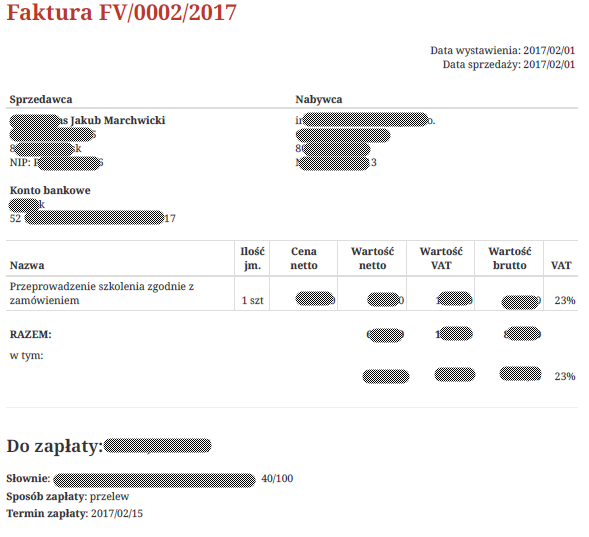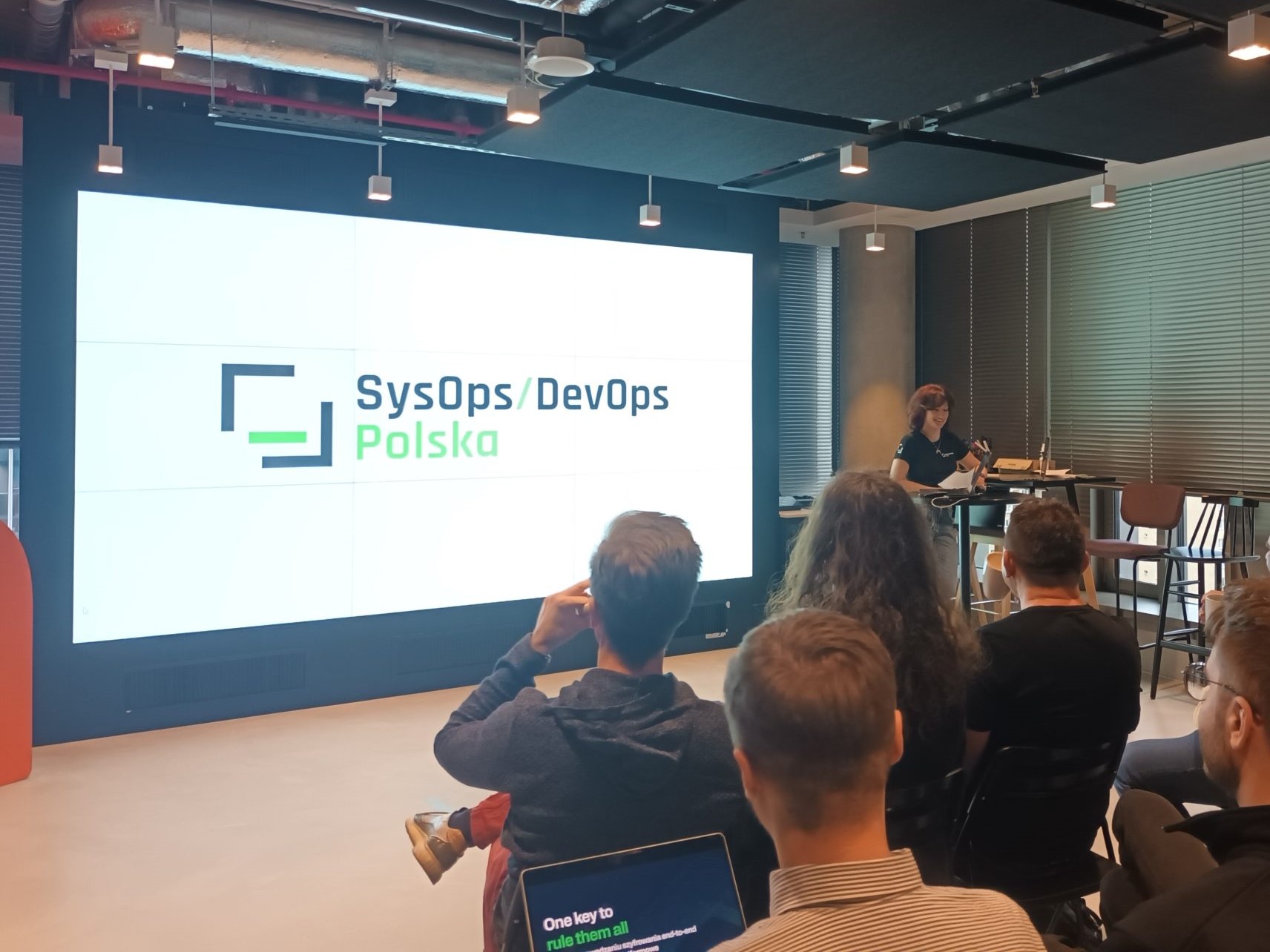This is something I’ve been thinking for a while, but this idea by Jezen got me going. As Jezen nicely put it:
Since starting my own company back in April, I’ve had to piece together some fairly mundane business boilerplate, e.g., invoices, at the end of each month.
I think people typically use something from Microsoft Office for this, or maybe some online invoicing web application, but I’m quite happy to stay in the land of Vim for these tasks.
Planning
Before I even started planning, I needed to figure out some essential information required on an invoice. This differs from county to country so the list is Poland specific (a I assume fairly overcomplicated compared to British or American invoices - well):
-
✓ invoice date
-
✓ consecutive number, based on one or more series which genuinely identifies an invoice
-
✓ names of both seller and customer, with addresses and tax identification numbers (ie. VAT numbers)
-
✓ date when goods or services were delivered (or date of receiving money when the service was prepaid)
-
✓ name of goods or services
-
✓ quantity (together with a measure - like a single piece)
-
✓ unit price
-
✓ discounts (if applicable or not included in the unit price)
-
✓ the overall value of goods or services (without taxes); unit price times quantity
-
✓ VAT tax rate
-
✓ the overall net value (all positions), divided by the tax rates
-
✓ the overall tax amount (all positions), divided by the tax rates
-
✓ the overall-overall (so everything)
Whew - pretty complex. However, for the sake of my own invoices, where I always have a single position with a single tax rate - there is a chance I can simplify it a bit.
When done with the requirements I can finally start doing the fun stuff - playing with Asciidoctor. I’ve split my work into few steps:
-
Asciidoctor template: an .adoc file with the structure of the document [1]
-
Styling: I only needed a PDF, so Asciidoctor PDF theming guide [2]
-
Source files: easy consumable, human readable files with invoice details
-
Runner: a groovy script to glue it all together and run the thing
Implementation
I’ve started with a draft of source file, which was YAML in my case. With a structure more or less like this:
This is obviously not enough for an invoice to be complete (especially under polish law regulations). So I needed some additional logic to calculate sums, amounts, parse dates etc.
I went with Groovy. Under no means I’m a Groovy expert, but there were a few quick wins with Groovy:
-
frictionless dependency management (with grapes),
-
integration with Asciidoctor (through asciidoctorj),
-
ability to run everything in the command line through a single file.
While Asciidoctor is Ruby based and Rake might have seemed natural - I’m even worse at Ruby.
The script has grown up to 150 lines of code; more that I’ve expected - but that’s mostly because I’m not very proficient with Groovy syntactic sugar. That’s also the reason why I’m not sharing the script - I need to work on that.
Calling Asciidoctor from Groovy is actually dead simple.
-
This is where I load YAML into a map-like structure
-
Slight enhancements to the basic asciidoctor-pdf theme
-
Invoking actual conversion based on my template file.
Rest of the script was validating the input and some (most) of additional logic related to calculating different values required on the invoice.
Initially the template sounded fairly simple, though there is a number of Asciidoctor and asciidotor-pdf design decisions (or limitations) which needed workarounds. These included more complex attributes types (like lists / maps) or elements positioning in PDF (align to right).
Therefore, some parts of the template looked a weird, like this one.
I wrote it already: most of my invoiced have a single position and a single tax rate, which makes my life a bit easier and I didn’t need to make the template too generic.
There were also few issues with including subsections, defining attributes within a template etc. Asciidoctor-pdf is still in alpha phase and I can imagine I’ve stretched it a bit to its limits. I’ve promised myself to document it with example and see how it should really work.
That’s actually one of the most awesome parts of asciidoctor-pdf: a YAML file which defines a number of attributes impacting the look and feel of the PDF. Changing fonts, sizes, colors as easy as 1-2-3 and neatly detailed in the theming guide [3].
That was a huge win!
So why I’ve done it?
I could’ve used one of millions invoicing software (offered even for free, in the cloud). True.
But I didn’t. I had a funny and geeky evening exploring the ecosystem of Asciidoctor. It was definitely worth it! And must admit, I like the final results.










